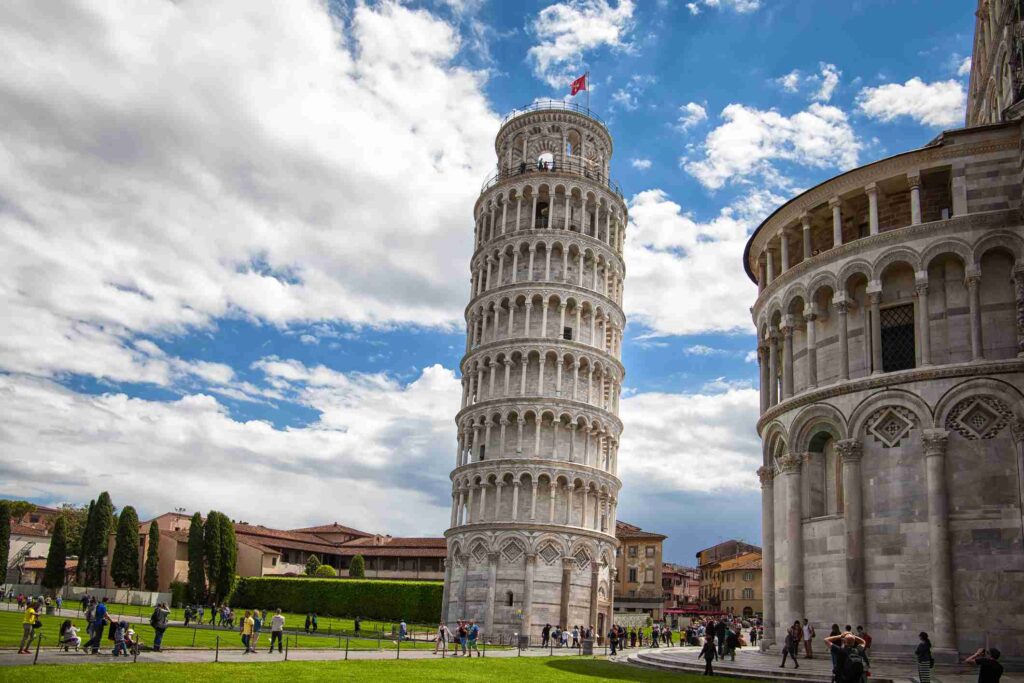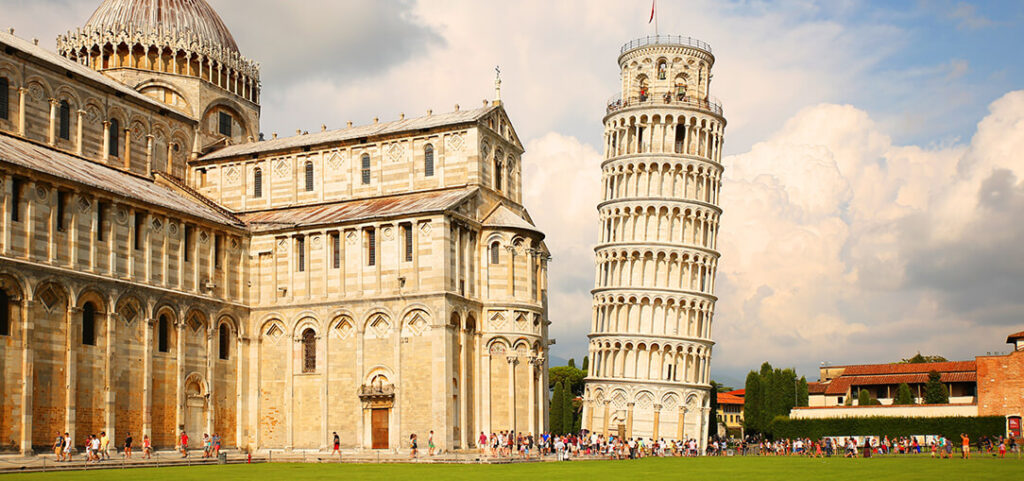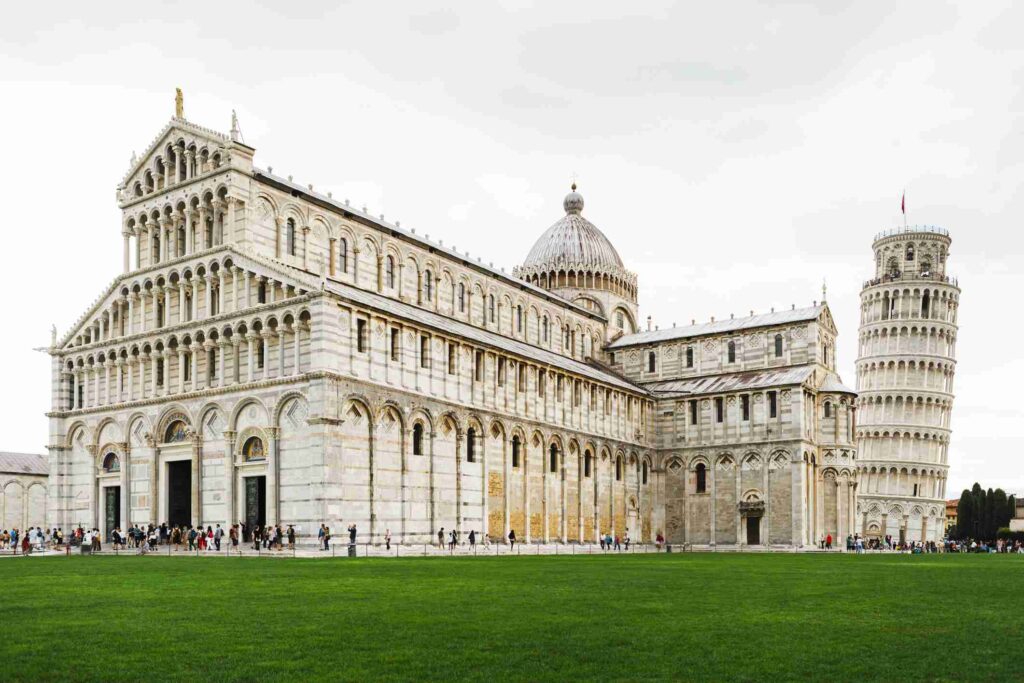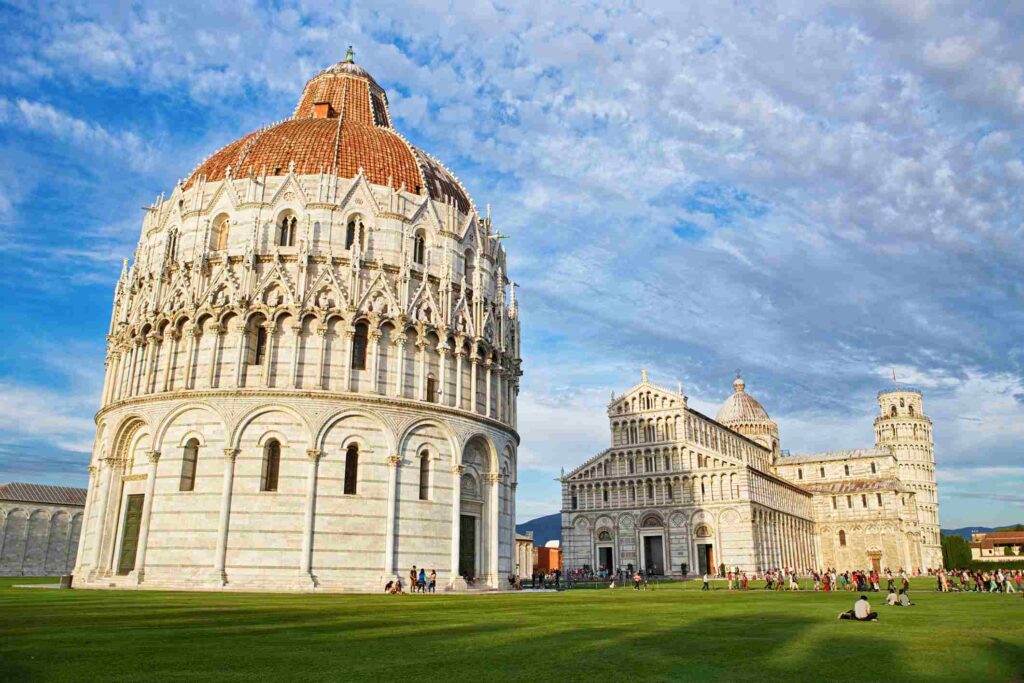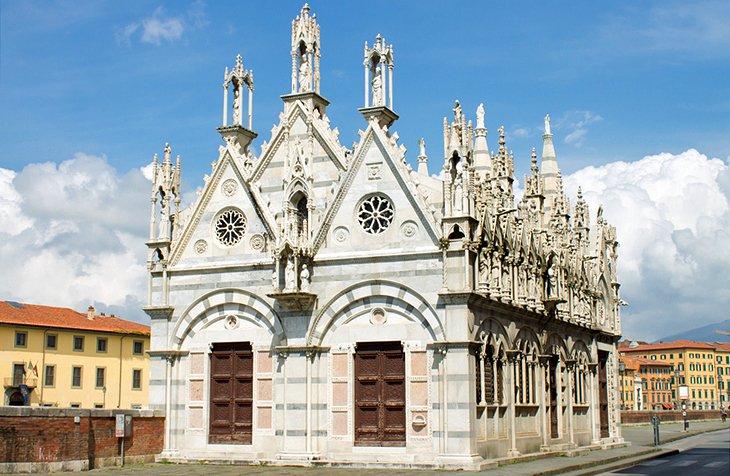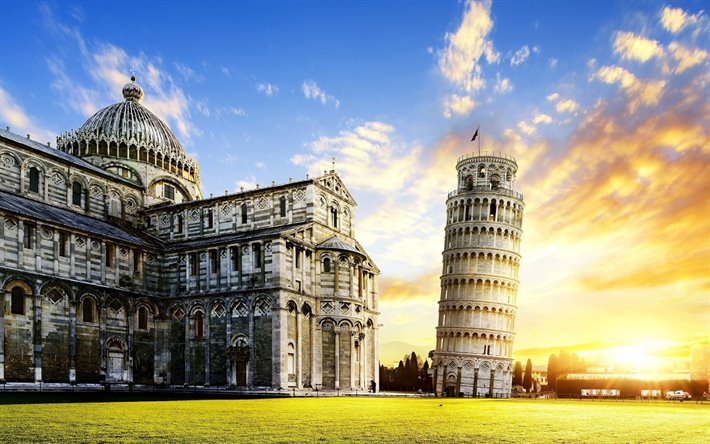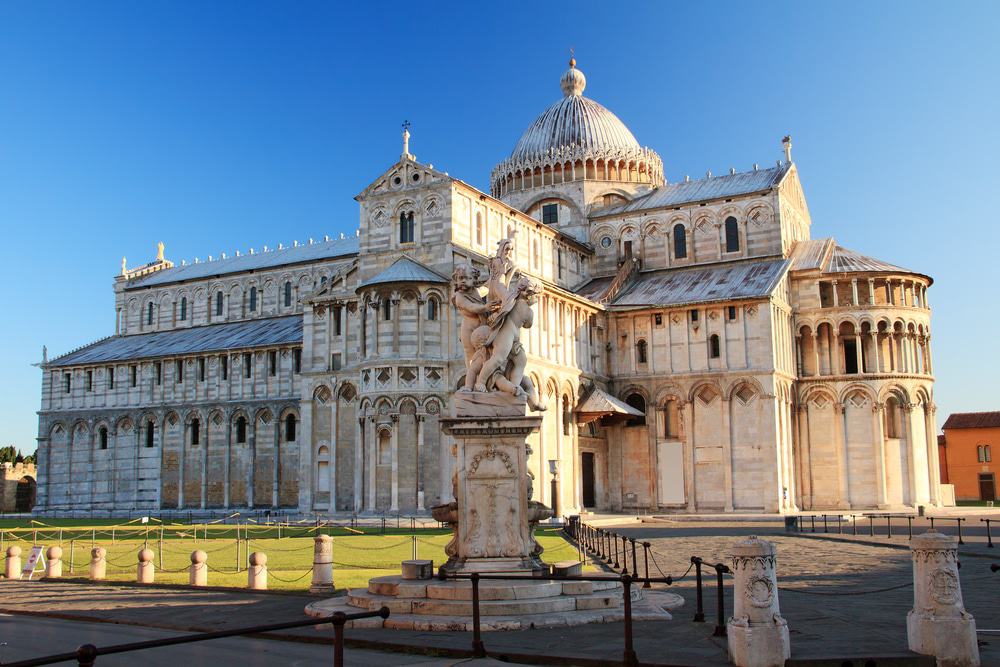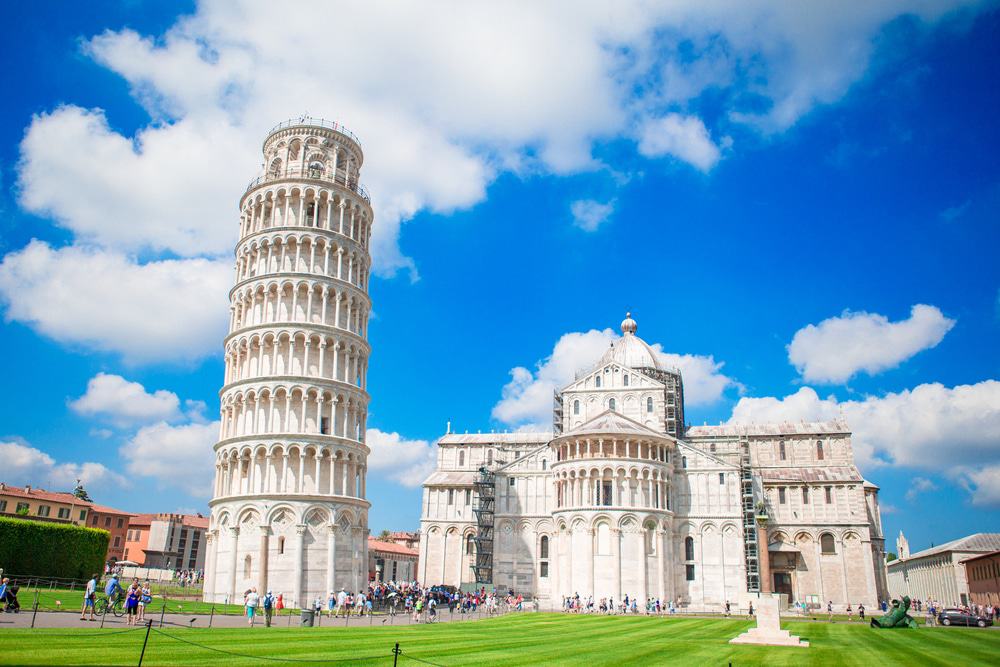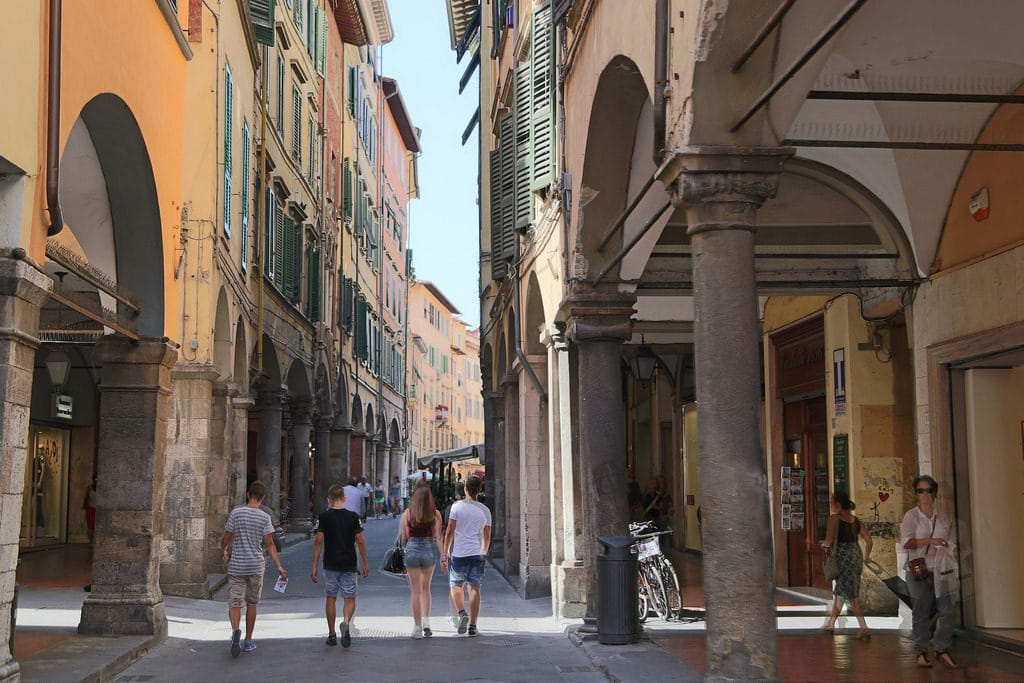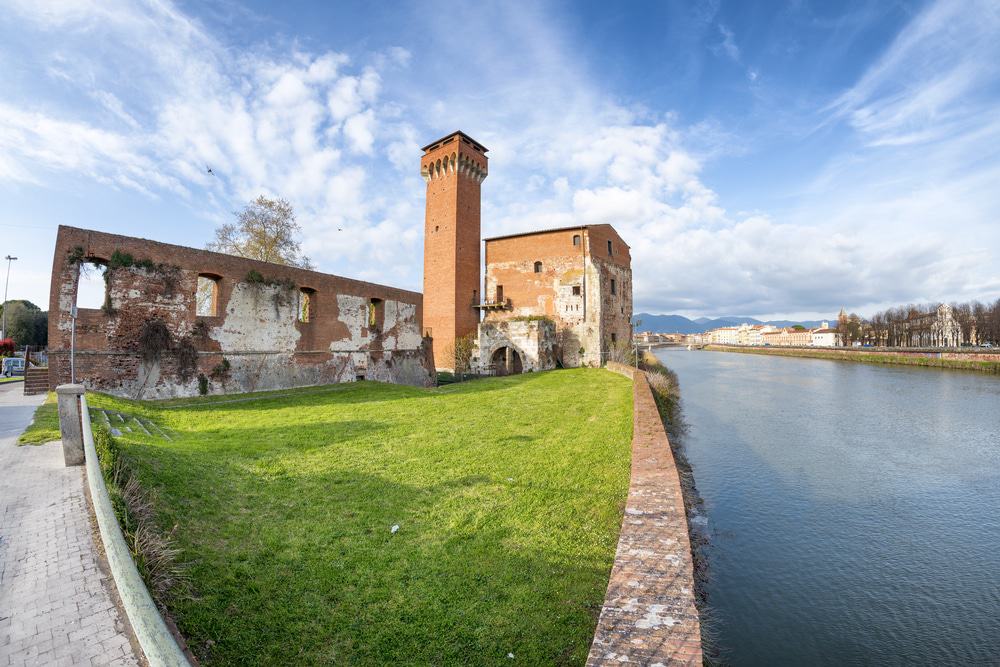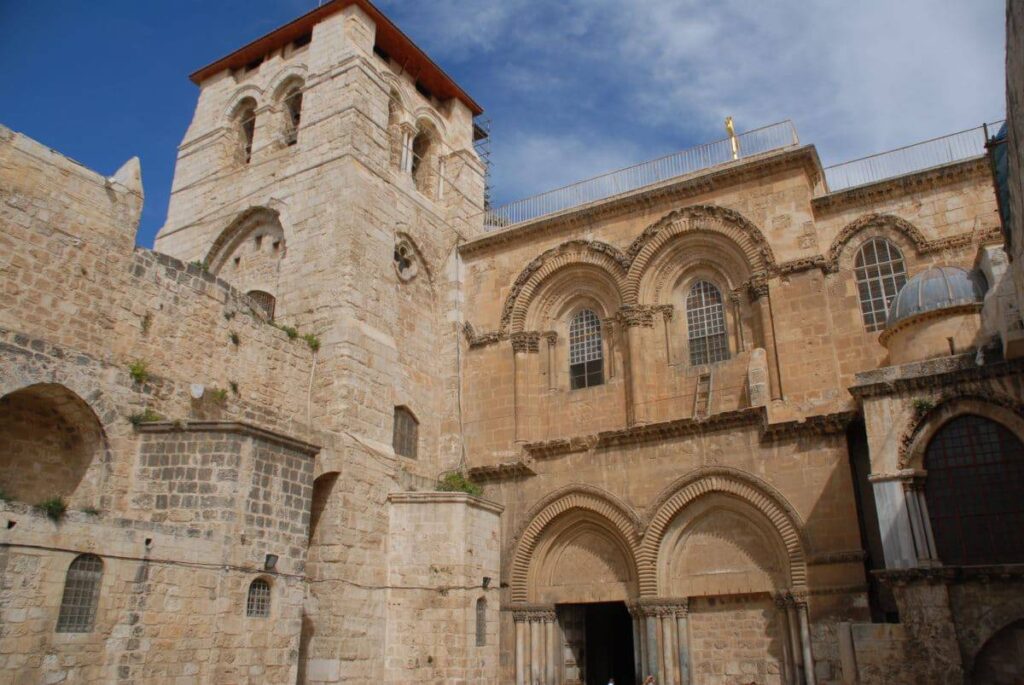For those wishing to visit Pisa, this city has a fantastic array of beautiful historical buildings and indeed it boasts over 20 historical churches. Furthermore Pisa has some world class museums and beautiful scenery along the banks of the River Arno. This historical city is worth much more than just a fleeting visit and serves as a great base for those wishing to explore this region of Tuscany.
Pisa is a city and comune in Tuscany, central Italy, straddling the Arno just before it empties into the Ligurian Sea. It is the capital city of the Province of Pisa.
HIGLIGHTS
Although Pisa is known worldwide for its leaning tower (the bell tower of the city’s cathedral), the city of over 91,104 residents (around 200,000 with the metropolitan area) contains more than 20 other historic churches, several medieval palaces, and various bridges across the Arno. Much of the city’s architecture was financed from its history as one of the Italian maritime republics.
The city is also home to the University of Pisa, which has a history going back to the 12th century and also has the Scuola Normale Superiore di Pisa, founded by Napoleon in 1810, and its offshoot, the Sant’Anna School of Advanced Studies, as the best-sanctioned Superior Graduate Schools in Italy.
Pisa is a legendary city and one of the most famous in this region of Italy. Tourists often stop at Pisa en-route to Florence but it is a fantastic city to stay in and offers a great deal more sites than just it’s legendary leaning tower. Located on the western coast of Italy, Pisa is only 20 minutes from the Ligurian Sea and has great transport links to Florence, Livorno and La Spezia. With a population of just 91,000 it is one of the smaller cities in the Tuscany region of Italy, but has historically been one of the most important and influential.
During the 11th century and onwards Pisa rose to prominence and became one of the major maritime republics of Italy. The city saw great development and it grew in population and investment was poured into the city to improve its infrastructure and build its world famous monuments that still stand today. During the Middle Ages Pisa was involved in various battles and played an important role in the wars and feuds between the Guelphs and Ghibellines. Today the city still maintains its ports and this accounts for much of its economy, furthermore, due to iconic buildings such as the Leaning Tower, Pisa has a well-developed tourist infrastructure.
Cathedral of Santa Maria Assunta
This Cathedral is sometimes overshadowed by the leaning tower, but it is a beautiful structure in its own right and is an absolute must when visiting Pisa.
Construction on this amazing cathedral was started in the 11th century and it was completed in 1092. The front façade of the cathedral is truly ornate with a series of beautiful stone and marble arches and three opulent bronze doors.
Leaning Tower of Pisa
This is by en-large the main reason people visit Pisa and is a structure that is known worldwide.
The Campanile or bell tower of Pisa Cathedral is a beautiful structure in its own right, but it has been made famous by its noticeable tilt.
Constructed in the 12th century after the cathedral, it was soon found that the foundations were unstable and the building began to lean.
To this day the tower still leans and measures have been taken to ensure it doesn’t collapse.
The Baptistery
This structure was created around the same time as the Campanile and was built to replace the old original baptistery.
This immense structure stands at 54m high and has a gorgeous exterior design with many different statues, arches and decoration.
Furthermore, the domed roof of the baptistery is only half complete – half is covered in orange tiles, whilst the other half remains bare and has never been finished.
Campo Santo
Located to the side of the Cathedral, this complex is made from the same stone as the other buildings and features a beautiful and peaceful interior courtyard.
The interior hallway of the main building is bathed in light and features some beautiful (if not slightly faded) frescos.
Santa Maria della Spina
You can find the Church of Santa Maria della Spina on the left hand bank of the River Arno opposite the National Museum of Pisa.
Originally created in the 13th century, the building features a Gothic style with a series of opulent pointed pediments and several rose windows.
Palazzo dei Cavalieri
This palace was constructed in the 16th century and was originally the HQ of the Knights of St. Stephen.
The front façade of this palace is truly beautiful and features some spectacular decoration on the stone work.
Furthermore, there is a large central staircase leading up to the main doors and a series of stone statues representing the Dukes of Tuscany.
University of Pisa Botanical Gardens
Originally the garden was constructed in the 16th century by the Medici family and has been relocated several times.
Located in the heart of the historic old town this garden is easily accessible and contains a beautiful array of plants, trees, flowers and fauna.
The garden is split into several different sections including gardens, ponds, greenhouses and an arboretum.
Main sights
The Leaning Tower of Pisa.The Monumental Campo Santo in the Piazza del DuomoFaçade of Santa Maria della Spina.St. Francis’ ChurchPalazzo della Carovana or dei Cavalieri.Cittadella vecchia.Convent, Pisa, Italy, 1895. Brooklyn Museum Archives, Goodyear Archival Collection (S03_06_01_001 image 291).Lungarno di Pisa.
While the bell tower of the cathedral, known as “the leaning Tower of Pisa”, is the most famous image of the city, it is one of many works of art and architecture in the city’s Piazza del Duomo, also known, since the 20th century, as Piazza dei Miracoli (Square of Miracles), to the north of the old town center. The Piazza del Duomo also houses the Duomo (the Cathedral), the Baptistry and the Campo Santo (the monumental cemetery). The medieval complex includes the above-mentioned four sacred buildings, the hospital and few palaces. All the complex is kept by the Opera (fabrica ecclesiae) della Primaziale Pisana, an old non profit foundation that operates since the building of the Cathedral (1063) to the maintenance of the sacred buildings. The area is framed by medieval walls kept by municipality administration.
Other sights include:
- Knights’ Square (Piazza dei Cavalieri), where the Palazzo della Carovana, with its impressive façade designed by Giorgio Vasari may be seen. Sited on the square
- Santo Stefano dei Cavalieri, church sited on Piazza dei Cavalieri, and also designed by Vasari. It had originally a single nave; two more were added in the 17th century. It houses a bust by Donatello, and paintings by Vasari, Jacopo Ligozzi, Alessandro Fei, and Pontormo. It also contains spoils from the many naval battles between the Cavalieri (Knights of St. Stephan) and the Turks between the 16th and 18th centuries, including the Turkish battle pennant hoisted from Ali Pacha‘s flagship at the 1571 Battle of Lepanto.
- St. Sixtus. This small church, consecrated in 1133, is also close to the Piazza dei Cavalieri. It was used as a seat of the most important notarial deeds of the town, also hosting the Council of Elders. It is today one of the best preserved early Romanesque buildings in town.
- St. Francis. The church of San Francesco may have been designed by Giovanni di Simone, built after 1276. In 1343 new chapels were added and the church was elevated. It has a single nave and a notable belfry, as well as a 15th-century cloister. It houses works by Jacopo da Empoli, Taddeo Gaddi and Santi di Tito. In the Gherardesca Chapel are buried Ugolino della Gherardesca and his sons.
- San Frediano. This church, built by 1061, has a basilica interior with three aisles, with a crucifix from the 12th century. Paintings from the 16th century were added during a restoration, including works by Ventura Salimbeni, Domenico Passignano, Aurelio Lomi, and Rutilio Manetti.
- San Nicola. This medieval church built by 1097, was enlarged between 1297 and 1313 by the Augustinians, perhaps by the design of Giovanni Pisano. The octagonal belfry is from the second half of the 13th century. The paintings include the Madonna with Child by Francesco Traini (14th century) and St. Nicholas Saving Pisa from the Plague (15th century). Noteworthy are also the wood sculptures by Giovanni and Nino Pisano, and the Annunciation by Francesco di Valdambrino.
- Santa Maria della Spina. A small white marble church alongside the Arno, is attributed to Lupo di Francesco (1230), is another excellent Gothic building.
- San Paolo a Ripa d’Arno. The church was founded around 952 and enlarged in the mid-12th century along lines similar to those of the cathedral. It is annexed to the Romanesque Chapel of St. Agatha, with an unusual pyramidal cusp or peak.
San Pietro in Vinculis. Known as San Pierino, it is an 11th-century church with a crypt and a cosmatesque mosaic on the floor of the main nave.
- Borgo Stretto. This medieval borgo or neighborhood contains strolling arcades and the Lungarno, the avenues along the river Arno. It includes the Gothic-Romanesque church of San Michele in Borgo (990). There are at least two other leaning towers in the city, one at the southern end of central Via Santa Maria, the other halfway through the Piagge riverside promenade.
- Medici Palace. The palace was once a possession of the Appiano family, who ruled Pisa in 1392–1398. In 1400 the Medici acquired it, and Lorenzo de’ Medici sojourned here.
- Orto botanico di Pisa. The botanical garden of the University of Pisa is Europe’s oldest university botanical garden.
- Palazzo Reale. The (“Royal Palace”), once belonged to the Caetani patrician family. Here Galileo Galilei showed to Grand Duke of Tuscany the planets he had discovered with his telescope. The edifice was erected in 1559 by Baccio Bandinelli for Cosimo I de Medici, and was later enlarged including other palaces. The palace is now a museum.
- Palazzo Gambacorti. This palace is a 14th-century Gothic building, and now houses the offices of the municipality. The interior shows frescoes boasting Pisa’s sea victories.
- Palazzo Agostini. The palace is a Gothic building also known as Palazzo dell’Ussero, with its 15th-century façade and remains of the ancient city walls dating back to before 1155. The name of the building comes from the coffee rooms of Caffè dell’Ussero, historic meeting place founded on September 1, 1775.
- Mural Tuttomondo. A modern mural, the last public work by Keith Haring, on the rear wall of the convent of the Church of Sant’Antonio, painted in June 1989.
Museums
- Museo dell’Opera del Duomo: exhibiting among others the original sculptures of Nicola Pisano and Giovanni Pisano and the treasures of the cathedral.
- Museo delle Sinopie: showing the sinopias from the camposanto, the monumental cemetery. These are red ocher underdrawings for frescoes, made with reddish, greenish or brownish earth colour with water.
- Museo Nazionale di San Matteo: exhibiting sculptures and paintings from the 12th to 15th centuries, among them the masterworks of Giovanni and Andrea Pisano, the Master of San Martino, Simone Martini, Nino Pisano and Masaccio.
- Museo Nazionale di Palazzo Reale: exhibiting the belongings of the families that lived in the palace: paintings, statues, armors, etc.
- Museo Nazionale degli Strumenti per il Calcolo: exhibiting a collection of instruments used in science, between whose a pneumatic machine of Van Musschenbroek and a compass probably belonged to Galileo Galilei.
- Museo di storia naturale dell’Università di Pisa (Natural History Museum of the University of Pisa), located in the Certosa di Calci, outside the city. It houses one of the largest cetacean skeletons collection in Europe.
- Palazzo Blu: temporary exhibitions and cultural activities center, located in the Lungarno, in the heart of the old town, the palace is easy recognizable because it is the only blue building.
- Cantiere delle Navi di Pisa – The Pisa’s Ancient Ships Archaeological Area: A museum of 10,650 square meters – 3,500 archaeological excavation, 1,700 laboratories and one restoration center – that visitors can visit with a guided tour.[12]
Educational institutions
Pisa hosts the University of Pisa, especially renowned in the fields of Physics, Mathematics, Engineering and Computer Science. The Scuola Superiore Sant’Anna and the Scuola Normale Superiore, the Italian academic élite institutions are noted mostly for research and the education of graduate students.
Construction of a new leaning tower of glass and steel 57 meters tall, containing offices and apartments was scheduled to start in summer 2004 and take 4 years. It was designed by Dante Oscar Benini and raised criticism.
- The Scuola Normale Superiore di Pisa was founded in 1810, by Napoleonic decree, as a branch of the École Normale Supérieure of Paris. Recognized as a “national university” in 1862, one year after Italian unification, and named during that period as “Normal School of the Kingdom of Italy” (Superior Graduate Schools in Italy i.e. Scuola Superiore Universitaria).
Located at: Scuola Normale Superiore di Pisa – Piazza dei Cavalieri, 7 – 56126 Pisa (Italia)
- The Sant’Anna School of Advanced Studies of Pisa or Scuola Superiore Sant’Anna is a special-statute public university located in Pisa, Italy, emerging from Scuola Normale Superiore di Pisa and operating in the field of applied sciences, (Superior Graduate Schools in Italy i.e. Scuola Superiore Universitaria)
Located at: Scuola Superiore Sant’Anna, P.zza Martiri della Libertà, 33 – 56127 – Pisa (Italia)
- The University of Pisa or Università di Pisa, is one of the oldest universities in Italy. It was formally founded on September 3, 1343 by an edict of Pope Clement VI, although there had been lectures on law in Pisa since the 11th century. The University has Europe’s oldest academic botanical garden i.e. Orto botanico di Pisa, founded 1544.
Located at: Università di Pisa – Lungarno Pacinotti, 43 – 56126 Pisa (Italia)
Churches
- Baptistry
- San Francesco
- San Frediano
- San Giorgio ai Tedeschi
- San Michele in Borgo
- San Nicola
- San Paolo a Ripa d’Arno
- San Paolo all’Orto
- San Piero a Grado
- San Pietro in Vinculis
- San Sisto
- San Zeno
- Santa Caterina
- Santa Cristina
- Santa Maria della Spina
- Santo Sepolcro
Palaces, towers and villas
- Palazzo del Collegio Puteano
- Palazzo della Carovana
- Palazzo delle Vedove
- Torre dei Gualandi
- Villa di Corliano
- Leaning Tower of Pisa




